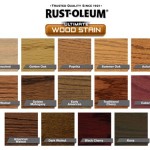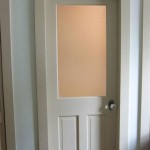How to Fix Scratches on Hard Plastic Car Interior Trim
Hard plastic trim is a ubiquitous feature in modern car interiors. It provides a durable and relatively inexpensive solution for covering various parts of the vehicle, including door panels, dashboards, consoles, and trim pieces. However, this material is susceptible to scratches and scuffs from daily use. Keys, bags, shoes, pets, and even accidental impacts can leave unsightly marks, detracting from the overall appearance of the interior. While professional detailing can address these issues, it is often possible to repair minor scratches on hard plastic car interior trim with readily available materials and tools.
The objective of this article is to provide a comprehensive guide on how to effectively repair scratches on hard plastic car interior trim. The methods outlined below are suitable for addressing superficial scratches and minor imperfections. Deep gouges or significant damage may necessitate more advanced repair techniques or professional intervention.
Assessing the Damage
Before attempting any repair, it is crucial to thoroughly assess the extent of the damage. This involves carefully examining the scratches to determine their depth and severity. Light scratches will typically appear as fine lines on the surface of the plastic, while deeper scratches will be more pronounced and may reveal the underlying material.
Pay close attention to the color and texture of the plastic. Some plastic trim pieces have a textured finish, which can make scratch repair more challenging. Matching the color and texture during the repair process is essential for achieving a seamless and aesthetically pleasing result. Taking detailed pictures of the damage before starting is also advisable for later comparison.
Consider the location of the scratch. Scratches in high-visibility areas, such as the dashboard or center console, will require more meticulous attention than scratches in less conspicuous locations. Furthermore, areas that are frequently touched or exposed to sunlight may require a more durable repair.
Essential Materials and Tools
Successfully repairing scratches on hard plastic car interior trim requires the correct tools and materials. Preparing these beforehand saves time and minimizes the chances of an unsatisfactory outcome. The following list details the essential items needed for this type of repair:
- Cleaning Supplies: A mild all-purpose cleaner, microfiber cloths, and a soft-bristled brush are necessary for cleaning the area around the scratch. This step removes dirt, dust, and grime that could interfere with the repair process.
- Fine-Grit Sandpaper: Various grades of sandpaper, ranging from 600 grit to 2000 grit, are crucial for smoothing out the scratched surface. Higher grit numbers indicate finer sandpaper, which is used for creating a smoother finish.
- Plastic Polish: A dedicated plastic polish is designed to remove fine scratches and restore the shine to plastic surfaces. Opt for a polish specifically formulated for automotive interior trim.
- Heat Gun or Hair Dryer: Heat can be used to soften the plastic and help it reform, reducing the visibility of scratches. A heat gun offers more control, but a hair dryer can be used as a safer alternative. Exercise extreme caution when using a heat gun to avoid damaging the plastic.
- Plastic Filler (Optional): For deeper scratches, a plastic filler can be used to fill the void and create a smooth surface for sanding and polishing. Ensure the filler is compatible with the type of plastic used in the car's interior.
- Color-Matching Dye or Paint (Optional): If the scratch has removed the original color of the plastic, a color-matching dye or paint may be necessary to restore the appearance. Automotive paint suppliers can often provide color-matching services.
- Applicators: Foam applicators, cotton swabs, and small brushes are useful for applying polish, filler, and dye or paint.
- Safety Gear: Eye protection (safety glasses or goggles) and gloves are recommended to protect against chemicals and dust produced during sanding.
Step-by-Step Repair Process
Once the damage has been assessed and the necessary materials have been gathered, the repair process can begin. Following these steps will help ensure a successful outcome:
Step 1: Cleaning the Area: Thoroughly clean the area surrounding the scratch with a mild all-purpose cleaner and a microfiber cloth. Use a soft-bristled brush to remove any dirt or debris from the scratch itself. Allow the area to dry completely before proceeding.
Step 2: Sanding (If Necessary): For light scratches, sanding may not be necessary. However, for deeper scratches, sanding is crucial for smoothing out the surface. Start with a higher grit sandpaper (e.g., 600 grit) and gently sand the scratched area in a circular motion. Apply light pressure and avoid sanding beyond the immediate area of the scratch. Gradually move to finer grits (e.g., 800, 1000, 1500, 2000 grit), using each grit to smooth out the scratches left by the previous grit. Regularly wipe the area with a clean microfiber cloth to check your progress. The goal is to create a smooth, uniform surface without removing too much material.
Step 3: Applying Heat (Optional): If the plastic is slightly raised around the scratch, carefully apply heat from a heat gun or hair dryer. Hold the heat source a few inches away from the plastic and move it back and forth to avoid overheating. The heat will soften the plastic and allow it to reform, reducing the visibility of the scratch. Be extremely cautious when using a heat gun, as it can easily melt the plastic if overheated.
Step 4: Applying Plastic Polish: Apply a small amount of plastic polish to a foam applicator. Rub the polish onto the sanded or heated area in a circular motion, applying moderate pressure. Continue polishing until the scratches are significantly reduced or eliminated. Wipe away any excess polish with a clean microfiber cloth. Repeat this process as needed to achieve the desired result.
Step 5: Applying Plastic Filler (For Deeper Scratches): If the scratch is deep, apply a small amount of plastic filler to the affected area using a small spatula or applicator. Overfill the scratch slightly, as the filler will shrink as it dries. Allow the filler to dry completely according to the manufacturer's instructions. Once dry, sand the filler smooth using fine-grit sandpaper (starting with 800 grit and progressing to 2000 grit). Be careful not to scratch the surrounding plastic during the sanding process. After sanding, apply plastic polish to restore the shine.
Step 6: Color Matching (If Necessary): If the scratch has removed the original color of the plastic, carefully apply a color-matching dye or paint to the affected area using a small brush or cotton swab. Apply thin coats and allow each coat to dry completely before applying the next. Blend the color into the surrounding plastic to create a seamless transition. Once the paint is dry, apply plastic polish to blend the repair with the surrounding area.
Step 7: Final Polishing: After all repairs have been completed, give the entire area a final polishing with plastic polish. This will help to blend the repaired area with the surrounding plastic and restore the overall shine. Wipe away any excess polish with a clean microfiber cloth.
Important Considerations and Precautions
Successfully repairing scratches on hard plastic car interior trim requires patience and attention to detail. Here are some important considerations and precautions to keep in mind:
Test in an Inconspicuous Area: Before applying any product to the scratched area, test it in an inconspicuous area to ensure it does not damage or discolor the plastic. This is particularly important when using plastic polish, filler, or color-matching dye or paint.
Avoid Over-Sanding: Sanding is a crucial step in removing scratches, but over-sanding can damage the plastic and create an uneven surface. Apply light pressure and monitor your progress closely. If you are unsure, start with a higher grit sandpaper and gradually move to lower grits as needed.
Use Heat Sparingly: Heat can be effective in reforming plastic, but excessive heat can melt or warp the material. Use a heat gun or hair dryer sparingly and keep it moving to avoid overheating. Never hold the heat source in one place for too long.
Match the Color Carefully: Achieving a seamless repair requires careful color matching. If you are using a color-matching dye or paint, ensure it is an exact match to the original color of the plastic. Automotive paint suppliers can often provide color-matching services.
Work in a Well-Ventilated Area: Many of the materials used in scratch repair, such as plastic polish, filler, and paint, can emit fumes. Work in a well-ventilated area to avoid inhaling these fumes.
Practice Patience: Scratch repair can be a time-consuming process, especially for deeper scratches. Be patient and take your time to ensure a high-quality repair. Rushing the process can lead to unsatisfactory results.
By following these steps and taking the necessary precautions, individuals can effectively repair scratches on hard plastic car interior trim and restore the appearance of their vehicle's interior. Remember that the complexity of the repair depends on the severity of the scratch, and some repairs may necessitate professional assistance.

Socata Tb20 Trinidad

Top Rated String Trimmer Heads Lowe S

Dewalt Quickload Dual Line Trimmer Spool Head Dwzsth999 The Home Depot

3 Place Trimmer Rack Trim Line Holder For Enclosed Trailer Racks Open Land New

Kobalt Plastic String Trimmer Replacement Spool Each 2908003

Aero Flex Trimmers Edgers At Com

Dewalt Dwzsth999 Quickload Spool Head

Snap Trim Aero Flex And Bd Cartridge Upgrade Kit Stbd01 The Home Depot

Greenworks 80v Front Mount String Trimmer Replacement Spool Sb00l00

3 Place Trimmer Rack Trim Line Holder For Enclosed Trailer Racks Open Land New
Related Posts








